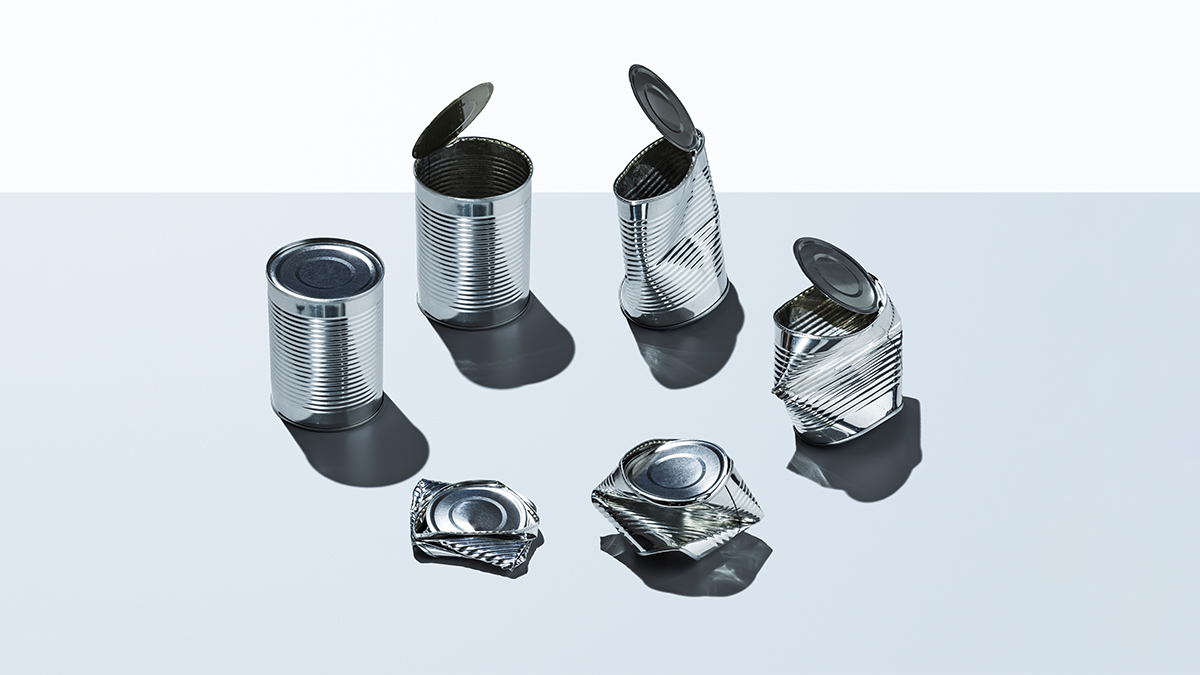It is widely accepted by now that the “normal” supply chains of material use — producing materials, using them, and then discarding them into landfills, other countries, or rivers and seas — are wasteful and damaging to the environment. As an extreme example, in 2019 oceanographers found a plastic bag in the Mariana Trench, the deepest known point in the world’s oceans. It’s easy, therefore, to see why consumers and policymakers have become interested in the concept of the “circular” supply chain, in which at least a large fraction of materials is recycled and reused in the product.
Despite the interest, we are a long way from achieving anything like circular supply chains. Take the UK as an example: only 9% of plastics are recycled, and recycling in general has stagnated at 45% since 2017, with a large fraction of collected materials not recycled but incinerated, to the concern of environmentalists. So what’s getting in the way of the circular supply chain?
To answer that question, we need to understand what makes circular chains work. Let’s begin by looking at some very different examples of ones that do:
Aluminum cans.
Aluminum cans are recycled and reproduced at a high rate (75% in the UK). Used cans are separated from general trash, collected, cleaned and then reworked along with “fresh” aluminum. The challenge for the functioning of supply chains is that these activities are performed by different actors in the chain — consumers themselves, possibly shops (if they take cans back), waste companies (where even within this category, waste logistics and waste “pre-processing” companies may be different), aluminum producers, and can manufacturers.
Each must get some payment or value out of participation. They get this value out of the energy savings from recycling cans to produce aluminum, which is much more energy efficient than producing it from Bauxite. Producers are willing to pay £1,200 per ton for cans (which translates to an average price of roughly £0.05 per can), which is sufficient to provide value for all the participants in the chain. (Similar economics hold for semi-precious and precious metals, such as copper and gold, where one can even see scavengers pick through electronics trash in landfills because it is so valuable.)
Office furniture.
The UK’s Rype Office has discovered that used furniture has many intact high-quality parts, which can be used to remanufacture high-quality furniture (some pieces have to add some new parts, usually made on-order by small suppliers, who are audited for sustainable processes). This requires the set-up of take-back channels — with active search for furniture being discarded — and an effective sales channel to explain the value to customers. The company has gained significant market share with this business model, offering office solutions to larger companies, in the UK. The key value driver is the steep value decline of used furniture, most of which can be recovered with good quality remanufacturing. There is also an aesthetic value, as the design and patina of old furniture parts can help produce a distinctive product.
Clothing and personal equipment.
Following a 2016 directive from the European Commission to look for circularity opportunities in defense, the clothing and personal equipment unit of the Dutch army (KPU) looked at its management of clothing and special uniforms (such as mission-specific desert suits) for 13,000 personnel. Old uniforms and gear had always been recovered and incinerated at the cost of about €500,000 per year to prevent misuse in criminal activities, and new equipment handed out. KPU realized that it was costly to destroy materials that still had use-value in them. They turned to repairing and replacing specified high-volume items with relatively high parts commonality. They also unlocked value through redesign — so that a damaged sleeve on a shirt, for instance, could be easily replaced rather than the shirt destroyed. As they built experience with circularity, designs, fabrics and materials were changed to make the cyclical re-use cheaper and easier and the recycled equipment of even higher quality and value.
The Economic Enablers of Cyclicality
Why is circularity possible in these seemingly very disparate cases yet so hard to achieve more generally? The answer is that in the three example organizations are all able to unlock and share enough value from recycling so that each participant in the supply chain benefits and chooses to participate. At the same time, there are systemic reasons in our economy that make this hard to achieve.
To see why this is the case, it is useful to compare production in a factory to production in a biological cell. A cell is a highly productive manufacturing system, not just metaphorically, but with a real functional equivalence. For example, it has a strict demand-pull lean flow system (storage is extremely low, and the ratio between pure processing time and throughput time in the cell is about 2:1, which beats even modern lean production plants), and the cell uses 100% inspection quality control where faulty parts are discarded (and disassembled) immediately. Cells also have an almost completely circular supply system. This is possible because of two systemic features:
- Parts commonality and easy disassembly. The cell builds its complicated structures from as little as 30 basic materials (such as water, nitrate, CO2, methane, carbon, oxygen, and phosphate), and a slightly larger number of intermediates (such as amino acids, sugars and starches, and fatty acids). The more complicated end products can easily be degraded back to the basic materials. Compare this to a medium sized manufacturing plant that likely sources materials from over 1,000 different suppliers.
- Highly local production. Most of the input and outputs for cellular production are sourced and used locally. Very little comes pre-made from elsewhere (through the river or air). Compare this to modern supply chains where for example, in car production, subassemblies of increasing complexity are shipped back and forth across country borders up to seven times. Around the cell (and the organisms made of cells), therefore, there are as few as 30 local reusage cycles for the basic materials, where indeed every participant gets something — from the plants, the herbivores, the carnivores, the bugs that digest dead animals and dead plants, to bacteria that process biological material further, so the plants can absorb the raw materials again from the water and soil through their roots. All this is fueled by energy from the sun captured via photosynthesis.
These two key features reduce the cost of re-use and increase its value because the materials are locally available and more cheaply and quickly obtainable than materials from elsewhere. If you look back at the examples of circular supply chains given above, these features arguably characterize the products involved. Aluminum is standard and recycling can happen within the (relatively local) reach of one factory, which has made aluminum the first widely used recycling success. Furniture used to be made all from non-standard and customized parts, so no recycling occurred. Rype’s big idea was to identify some re-use and remanufacture, which allowed them to start, but a wider spread of this will require the development of more standard parts, which will then enable local recycling markets. Finally, it is no surprise that the clothing success started with uniforms, which are more standardized than fashion clothing. Still, more standardization needs to be designed in to increase the volume to do the recycling locally (rather than having to aggregate over large regions).
The trouble is, most supply chains involve products that are far less simple in basic structure and span considerable geographies — and for economically powerful reasons.
The Barriers
In the majority of human supply chains, product parts have proliferated and production has been centralized in order to achieve two critical goals: performance via specialization of parts (many specialized materials and designs that add functionality) and economic efficiency via economies of scale (large plants that share fixed costs and deliver to a wide area with an elaborate distribution system).
Because most supply chains have optimized for these goals, adopting circular business models is prohibitively expensive, certainly in the immediate future. To recycle and remanufacture products or components, the collection systems would have to stretch over vast distances in order to get back from the locus of use to the locus of manufacturing. In addition, because of parts specialization, it is very difficult to amass enough volumes of the parts to make recycling worthwhile (or it would require very deep stripping down to the basic metals, the basic silicon, or the basic hydrocarbons that make up the thousands of different plastic variants).
In the longer term, there are technological developments under way that could support some movement toward more circularity. You can already buy a 3D printer for your home for about $1,000 that makes a lot of plastic shapes by your specification and metal 3D printing is rapidly advancing in performance and price, and it will also allow the creation shapes that cannot be made with any of the traditional technologies. As 3D printing becomes more widely adopted, decentralization in supply chains will become more economical. To be sure, the initial assembly plants of complex products may still need centralization for some time to come, but spare parts could in principle be decentralized completely to the point of use.
***
The bottom line, at least for the foreseeable future, is that making cyclical supply chains widespread will require that business gives up some of the economies of its large manufacturing plants and cut back on the specialization (and thus the feature performance) of parts. Consumers would get slightly less sophisticated products, and experience suggests that most would not be willing to forego performance for environmental sustainability at the moment. Businesses follow consumer desires. As a result, circular supply chains are likely to remain relatively rare outside those that are naturally local and simple to begin with, at least in the near term.








